Both mice and rats are rodent species that you should avoid having inside your home. Due to their ability to swiftly adapt to human environments, three rodent species are the most common pests in homes and businesses worldwide. These include the House mouse (Mus domesticus), the Brown rat (Rattus norvegicus, also known as the Common or Norway rat), and the Ship rat (Rattus rattus, also known as the Black rat or Roof rat).
According to the British Pest Control Association, the House mouse and Field mouse or Wood mouse are the most common types of mice in the UK. They frequently leave unusual evidence inside the property they are infesting.
Before deciding whether you should call a pest control company, like Merlin Environmental, watch out for these signs first:
Rodent droppings
Although it’s not pleasant to come upon a pile of mouse waste, it can be useful in identifying the type of rodent you have in your home so you can start to take the next steps in finding a solution. If you see numerous, distinct heaps or tracts of what appears to be rodent poo in your home, especially along walls, take a closer look to discover whether it’s from a rat or mouse.
House mouse poo:
Mice droppings are typically 3 to 6 mm in length, smooth, and pointy at the ends.
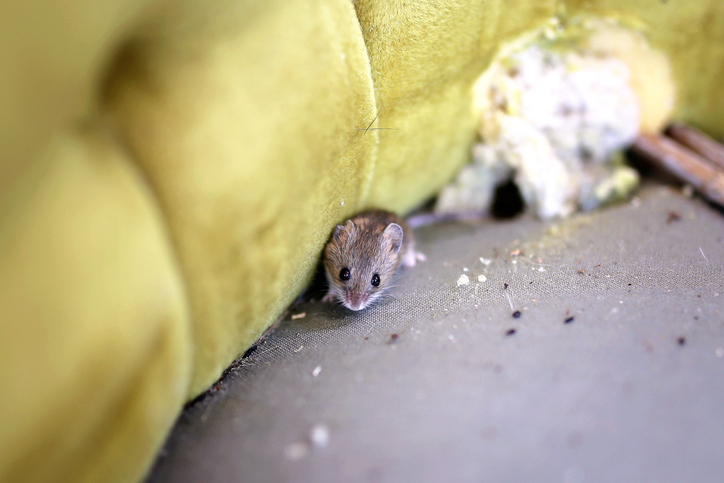
Rat poo:
Brown rat: Droppings from Norway rats are typically dark in colour and have blunt ends.
Ship rat: The droppings of roof rats are black and have pointy ends.
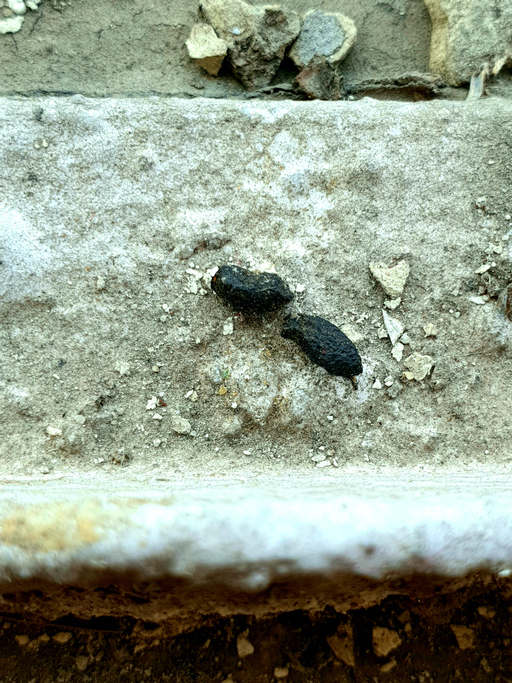
Chew marks on wood or drywall
Mice and rats are both ferocious chewers because their teeth never stop growing. Around 3-mm long teeth marks are typical for rats. Smaller and “scratchier” markings typically indicate mice. Look along skirting boards, door frames, cupboards, doors, and anything else that acts as a barrier to prevent access behind walls. Check the back panels of cabinets if you hear noises coming from inside your walls to try to locate the rodent’s entryway.
Strange squeaking or scratching noises
Because of their nocturnal habits, you’re much more likely to hear or see mice and rats at night. If you have a rodent infestation, you will hear moving, clawing, and squeaking noises inside your walls. If you stay up late, you might see them darting across the floor or the wall.
Heavy musky odour
Like other creatures, rats leave a distinct odour in their path. It’s time to think about pest control if your home smells musty all of a sudden and no amount of open windows or fans appears to get rid of that awful stink. Because they can swiftly construct nests and multiply, the odour will increase the larger the rodent population becomes.
Tiny tracks in dusty areas
Dusty areas will show tiny imprints of rodents or lines from their tails dragging. Check the areas around food sources, corners, and skirting boards. Following these clues, you could identify a rodent’s entrance and exit places.
Greasy smears on skirting boards and other areas as well
When moving, rats and mice frequently stay close to borders and walls. You might have some very unwelcome visitors if you see oily stains along your skirting boards or the bases of your walls where their furry coat has been rubbing as they scurry along. Of course, there are other reasons why marks could emerge, so if you see any, keep the affected areas tidy and watch to see whether the marks return.
Dogs disturbed at night
Dogs may become uneasy if they hear or smell rats or mice within the home. Especially at night when rodents are more active, you could find that your dogs pay closer attention to the garden’s fence line. However, it should be noted that you should not rely on your pets to eliminate mice or rats in the house. Dogs’ immune systems are significantly different from cats’, and they might not be able to fight off some diseases that rats and mice frequently carry. And as for cats, while some enjoy hunting rodents, many simply don’t. It is always better to take action yourself instead of relying on your pets.
How do you know whether it is a mouse or a rat?
The biggest difference between rats and mice is their size. Rats are much larger and heavier, while mice have smaller, slender bodies. Mice also have long slender tails covered in hair, while rat tails are relatively shorter, thicker, and have no hair.
Rats and mice also make different noises. Rats make hissing, chattering, and squeaking noises, while mice are likelier to make high-pitched squeaks to communicate.
One of the biggest telltale signs that you have rodents is the sound they make when Scurrying, scratching, gnawing, and rustling around in your attic or inside walls. While both rodents make the same sounds, generally, those from a rat will be louder because of its larger weight and greater strength.
One of the most frequent mistakes when determining what species of rodent is present in a home is confusing a young rat with an adult mouse.
The pair of incisor teeth in the upper jaw is a defining characteristic for all rodents. They often have long tails and small legs. Still, a deeper examination of their physical features and behaviours reveals that each species has easily recognisable characteristics that you may use to determine which pest is infesting your property. If you are familiar with rodents, you can readily distinguish between the two. A young rat will have huge feet, a stubby, pointed face, and a wide nose. Its head will also be larger than its body. In contrast, an adult mouse’s physique will be more proportionate and slimmer, and its head will appear more acutely slanted.
To accurately distinguish between a mouse and a rat, please refer to the table below.
| Rats | Mice |
| Small ears | Large ears |
| Large and prominent eyes | Small eyes |
| Blunt and rounded nose | Triangle-shaped nose |
| Body length is approximately 20-25 cm (8-10 inches) | Body length is approximately 6-9 cm (2-4 inches) |
| Tail length is approximately 15-20 cm (6-8 inches); thick, hairless, and scaly | Tail length is approximately 8-10 cm (3-5 inches); thin and slightly hairy |
| Large feet | Small feet relative to body |
| They are omnivores, so they eat everything, even meat. Consume up to 30g of meals each day and rely on water regularly | Eat a wide range of foods, but mostly prefer cereals. Consume 3g of food daily and can go for a long time without water |
| Rats leave their nest for food, water, and breeding. They communicate mostly by scent marking using pheromones, biochemicals found in urine and faeces. | Mice can climb quickly but often dwell on the ground and build their nests in burrows. In severe infestations, their body grease, urine, and dirt can solidify into tiny pillars. |
| Both rats and mice chew on wood, paper, and fabric. They chew on wiring and drill holes in walls, furniture, and electrical devices, resulting in a short circuit and setting your property on fire. They also destroy garden crops and contaminate the food you and your pet eat. | |
| Carry diseases like leptospirosis, salmonella, and hemorrhagic fever | |
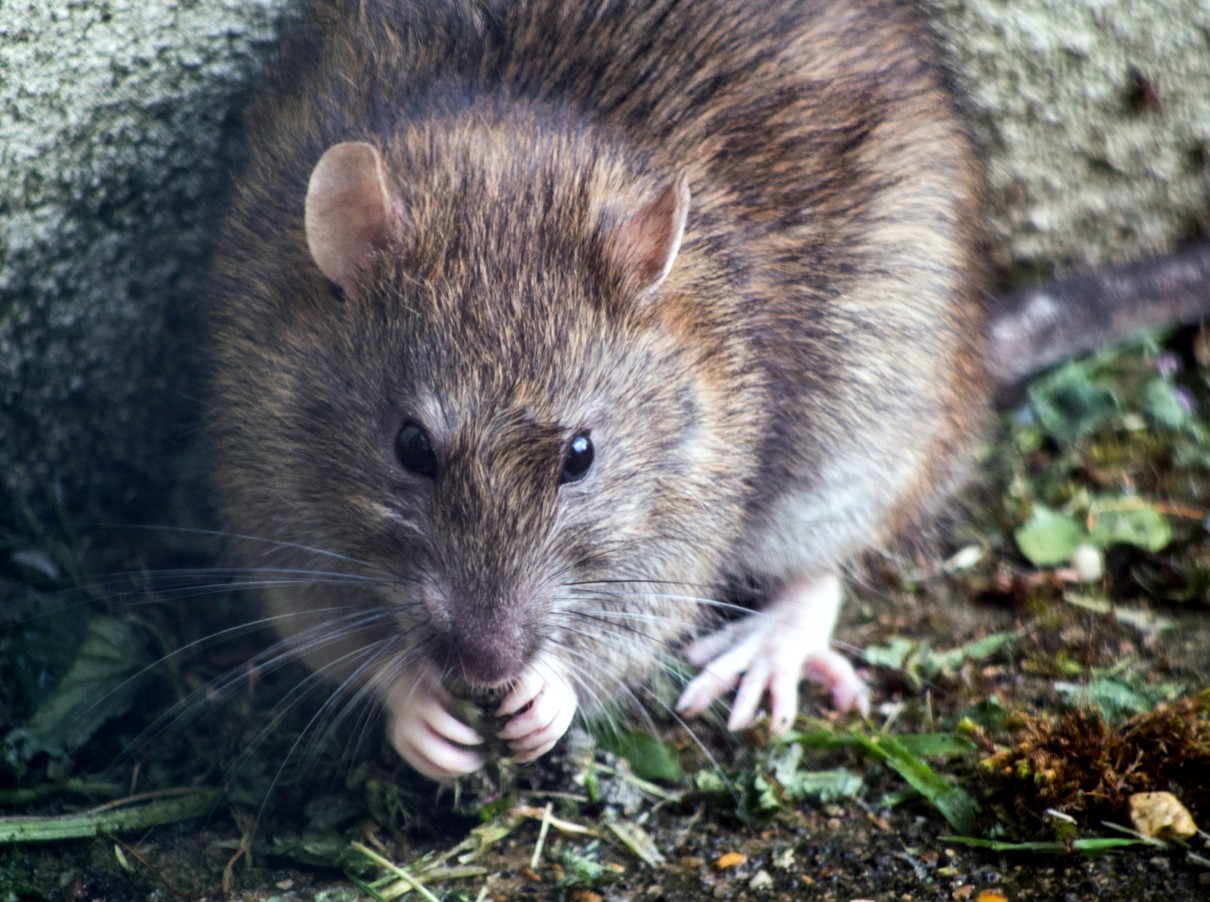
What does a rat look like
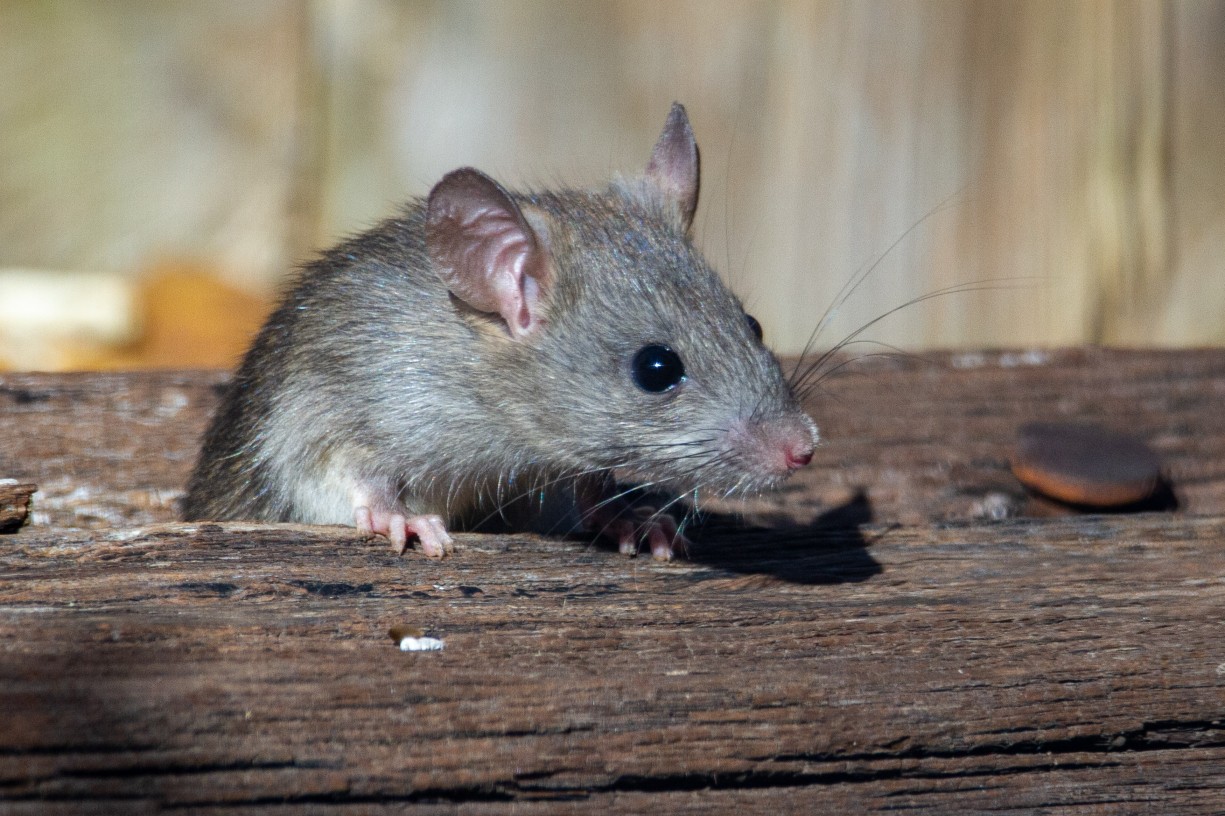
What does a mouse look like
What attracts mice and rats?
Food and shelter are the two key factors that can draw mice and rats to your home. Rodents absolutely love food waste on the floor, surfaces, or otherwise easily accessible.
In order to avoid the worst of the cold throughout the winter, rats and mice need refuge as well. That’s why they search for cosy, warm locations to raise their offspring. A warm house with lots of hiding spots is ideal, and an untidy house is even better.
Can mice and rats infest the same property at the same time?
Both mice and rats are extremely territorial. The rats will probably prevail in the struggle for survival if your house becomes inhabited by both. Due to the competition for food, it’s improbable that you will observe a rat and a mouse cohabitating in a house. Both varieties of rodents can only be supported by a large amount of food and habitat.
Furthermore, mice are afraid of rats because they are incomparable in terms of size. Rats can easily kill mice because the latter is smaller. This is why mice will avoid houses that are occupied by rats. However, it is possible that your home can become home to two or more different families of mice or multiple different families of rats.
Where will you find rats and mice on your property?
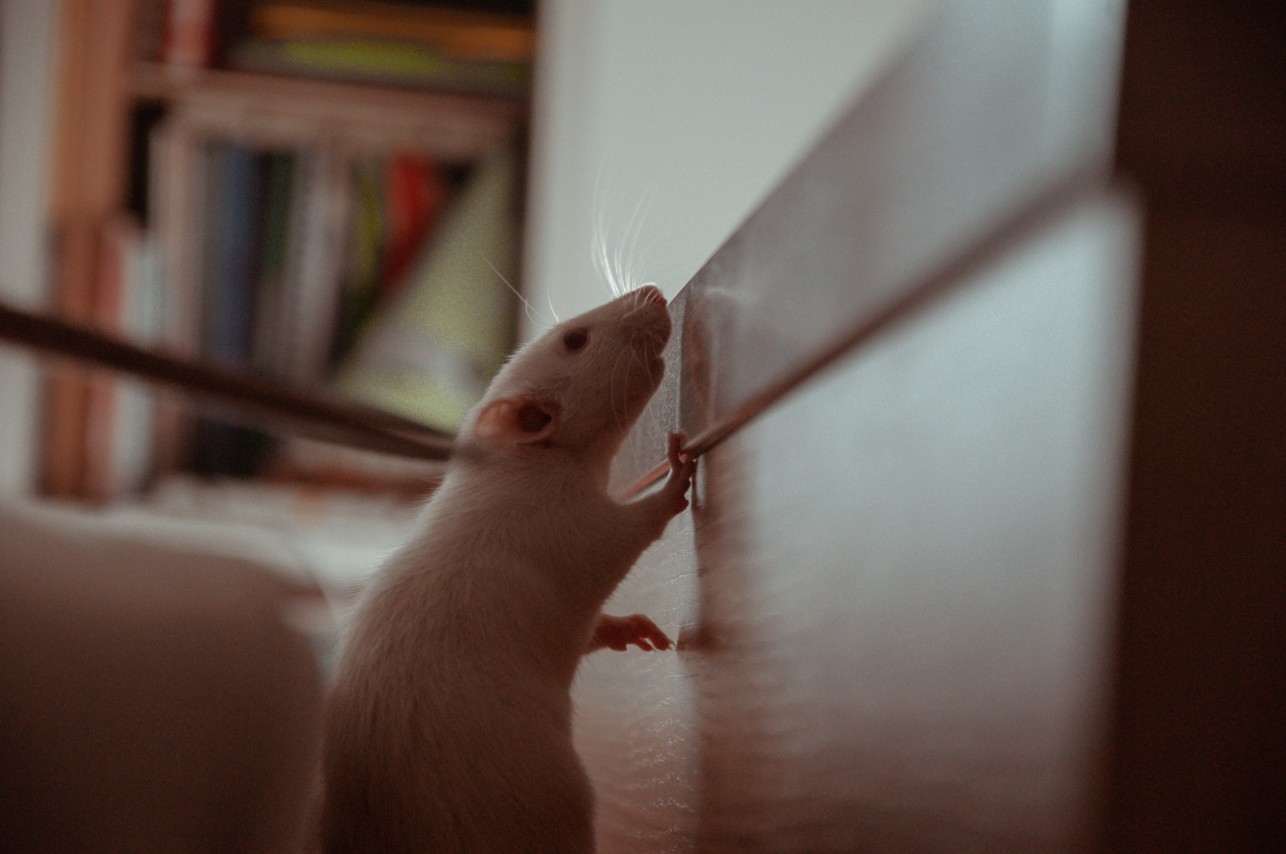
Attics and lofts – Check for chewed objects, shredded insulation, and rat poop in crevices and inside cardboard boxes, among other things.
Kitchen and laundry appliances – Look under stoves, washers, dryers, and dishwashers. Check any spaces where cables or pipework enter your property from the outside, as these are often entry points.
Concealed areas – Young rats can fit into places that are out of sight and possibly out of mind, such as crawl spaces, suspended ceilings, and even cavity walls.
Plants or vegetation – Search for rat burrows among the roots of trees and shrubs, in overgrown vegetation, or close to a wasteland.
Compost bins – Rats like the warmth, and food compost piles provide great insulation in cold weather. Look for holes and nibble marks on the bin’s base and lid.
Drains – Check whether the drain covers are broken or have holes in them. Rats and mice can swim through the water in outdoor drains to gain entry to your home.
Decking – Look for signs of gnawing and burrowing damage along the borders of decked areas. Rats frequently build their nests under the decking as it provides shelter and protection as well as offers nice proximity to your bins.
Sheds – Check the edges of sheds and outbuildings for rat holes (entrances to tunnels). Rats enjoy digging tunnels adjacent to sturdy objects like walls to gain access to shelter
Garage – Check garages for cracks around door frames or holes chewed out of wooden doors’ bottoms. Check the area around the internal entrance and any vents that allow access to other internal spaces if your home has an integral garage.
How fast do rats and mice breed?
At only four weeks old, rats and mice are already fully grown. This indicates that these pests can reproduce at a young age. A minor rodent issue could develop into a major one because they mature quickly.
A female mouse gives birth to 32 to 56 pups each year.
A female rat, on average, gives birth to 84 offspring per year
Since rodents give birth regularly and reach maturity quickly, the numbers can increase exponentially in a relatively short time frame.
By getting in touch with a pest control expert immediately, you can ensure that you stay on top of the problem before it gets out of hand.
How to get rid of mice and rats in your home
Since rodents are versatile, extremely agile, and breed quickly, it is crucial to get rid of them as soon as possible. This combination can make controlling them challenging for an untrained person. There are a lot of DIY remedies and procedures you can find online to resolve a rodent problem.
If you choose to do the job yourself, what you can do right away is to thoroughly clean your kitchen to get rid of all food remnants (crumbs, grains of sugar, or droplets of liquid). Rodents will eat anything left out, so deal with it right away and wash it up. All food should be stored airtight in a box, especially dry food and compost waste.
Additionally, you can check to see that your home is as airtight as possible. Clean out cabinets, patch holes in outside walls or skirting boards, patch major floorboard gaps, and remove any debris that could be used as nesting areas.
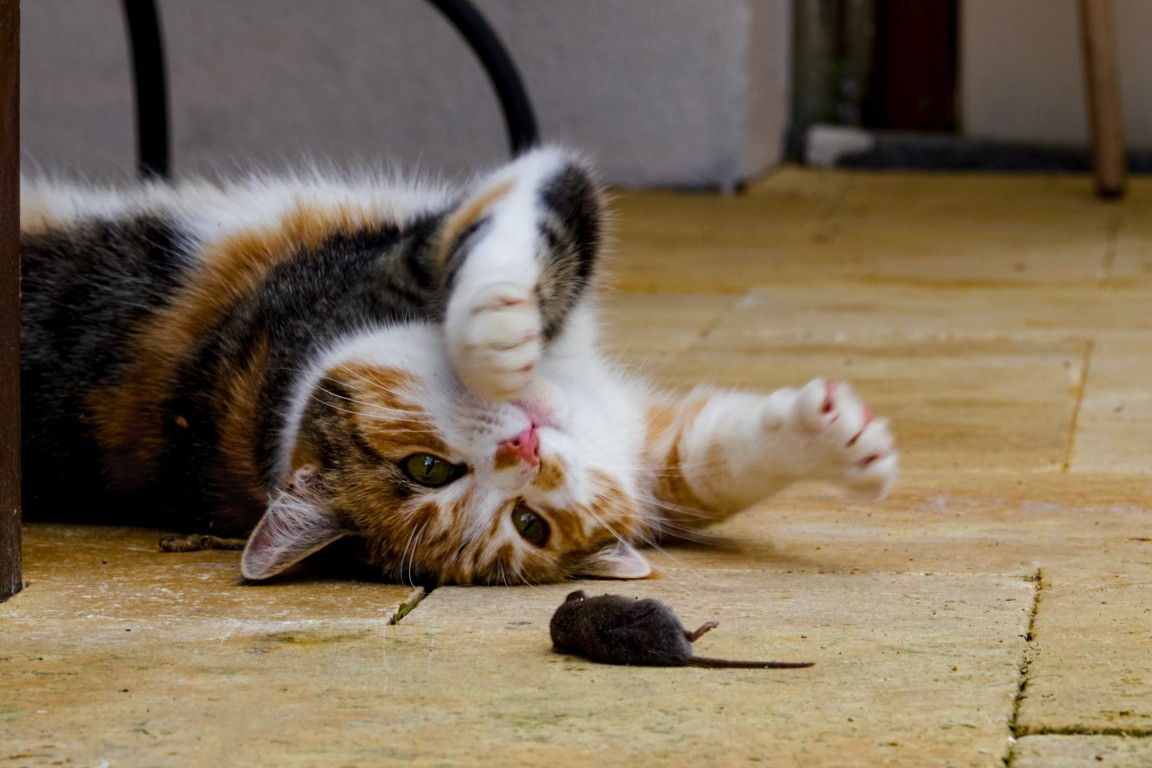
Even though cats are believed to be ineffective killers of rats, some love to hunt mice. A cat may help to deter rodents, but it’s not likely that the cat will eliminate the problem entirely.
You can also purchase poisons and traps for domestic use from a hardware store or garden centre.
If you want something a little more natural, you can use baking soda to kill rats. The concept behind using baking soda to kill rats is that the rodent’s stomach acids will react with the bicarbonate in the powder. This will produce carbon dioxide gas. Rats cannot expel gas. Therefore, it basically accumulates in their stomach tract. It will eventually result in a rupture or blockage. However, a study shows that mice develop immune-related changes when exposed to systemic stress and toxicity, which is a different case from rats. So, resistance to baking soda may develop, and the substance might not produce your desired results with mice.
Using only mouse traps or rat traps typically fails to control them because they tend to learn from the mistakes of their deceased. Thus, a mix of rodenticides may be required. Rodenticides are poisons created specifically to eliminate rats and mice from an area. They are made up of “second generation” poisons like Brodifacoum, Bromadiolone, and Difenacoum, as well as “first generation” poisons like Warfarin and Coumatetralyl. The downside of using poisons to kill rodents in your home is that they often return to their nest before the poison kills them. If you don’t have access to their nest, their corpses will rot there without being removed, which may cause a foul smell for occupants living on the property.
That’s why seeking help from a professional pest control company can be really helpful. Professionals will know the best methods to correctly identify the species and be able to take the necessary action to remove them. Additionally, experts will be able to identify the root of your rodent problem and take action to assist you in preventing recurrence.
At Merlin, we specialise in helping businesses get rid of rodents. If you think you have rats or mice infesting your business, you can give us a call, and we’ll do a free inspection for you.

